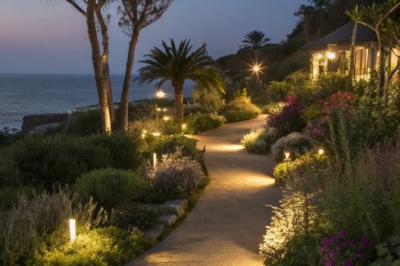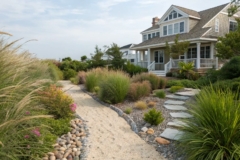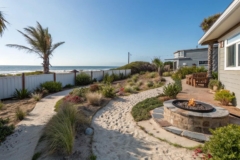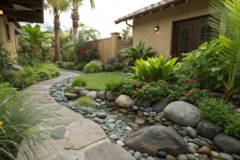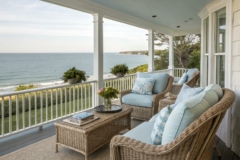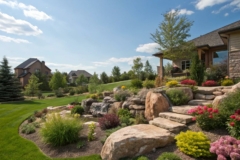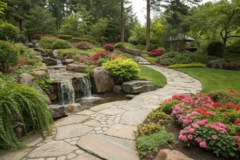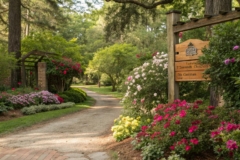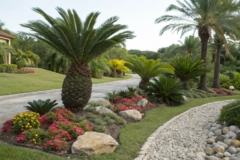1. Mix Textures
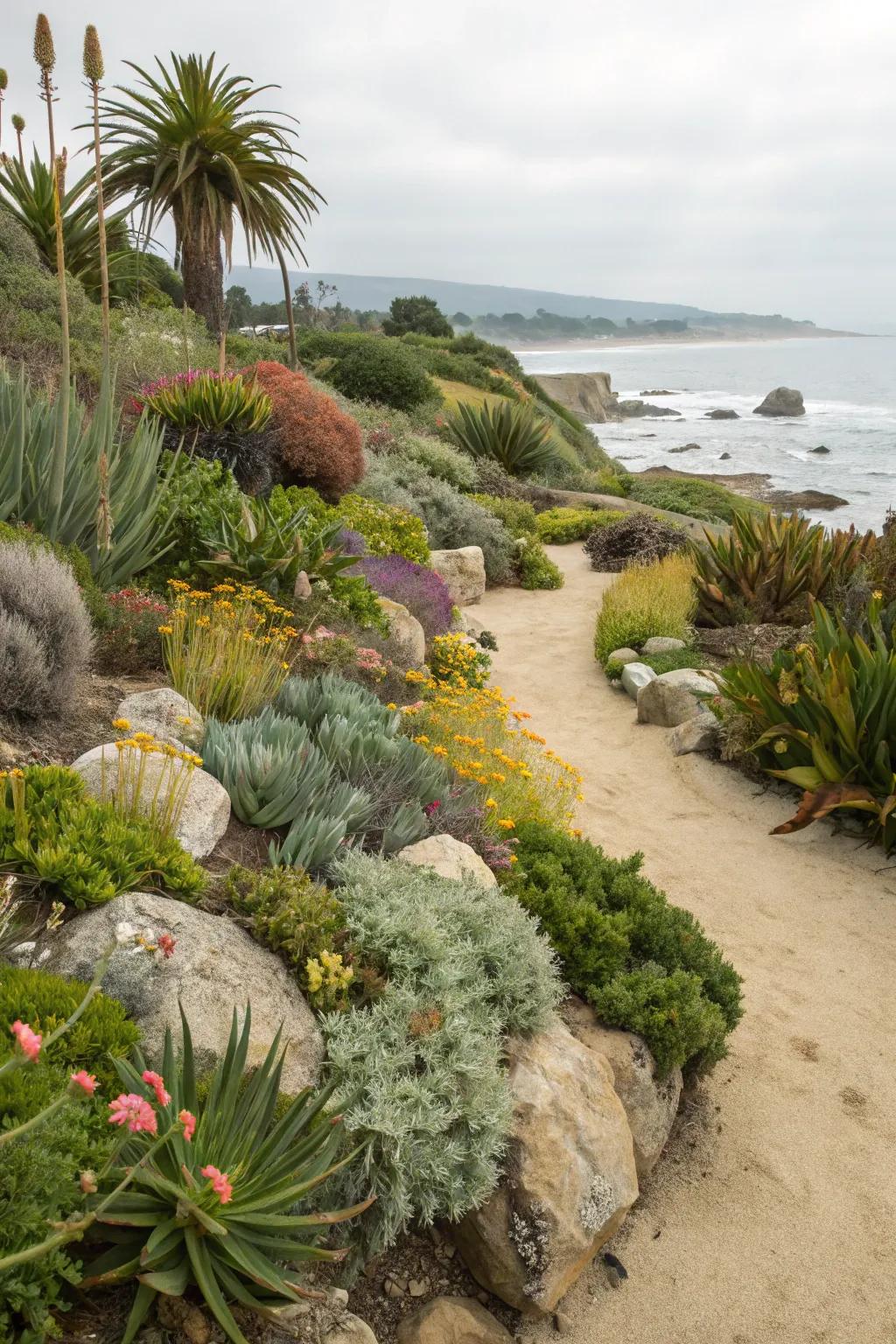
Combining different textures from plants and materials adds visual interest. I love pairing soft grasses with rugged driftwood for a dynamic look.
A few things you might like:
- Decorative Driftwood Pieces: Enhance your coastal landscape with rustic driftwood for added charm and texture. Perfect natural decor.
- Soft Outdoor Grasses: Introduce soft and flowing grasses into your garden for a lush, textured appearance. Easy to maintain.
- Natural Rock Accents: Incorporate natural stone rocks into your landscape to create contrast and visual interest effectively.
2. Create Natural Pathways
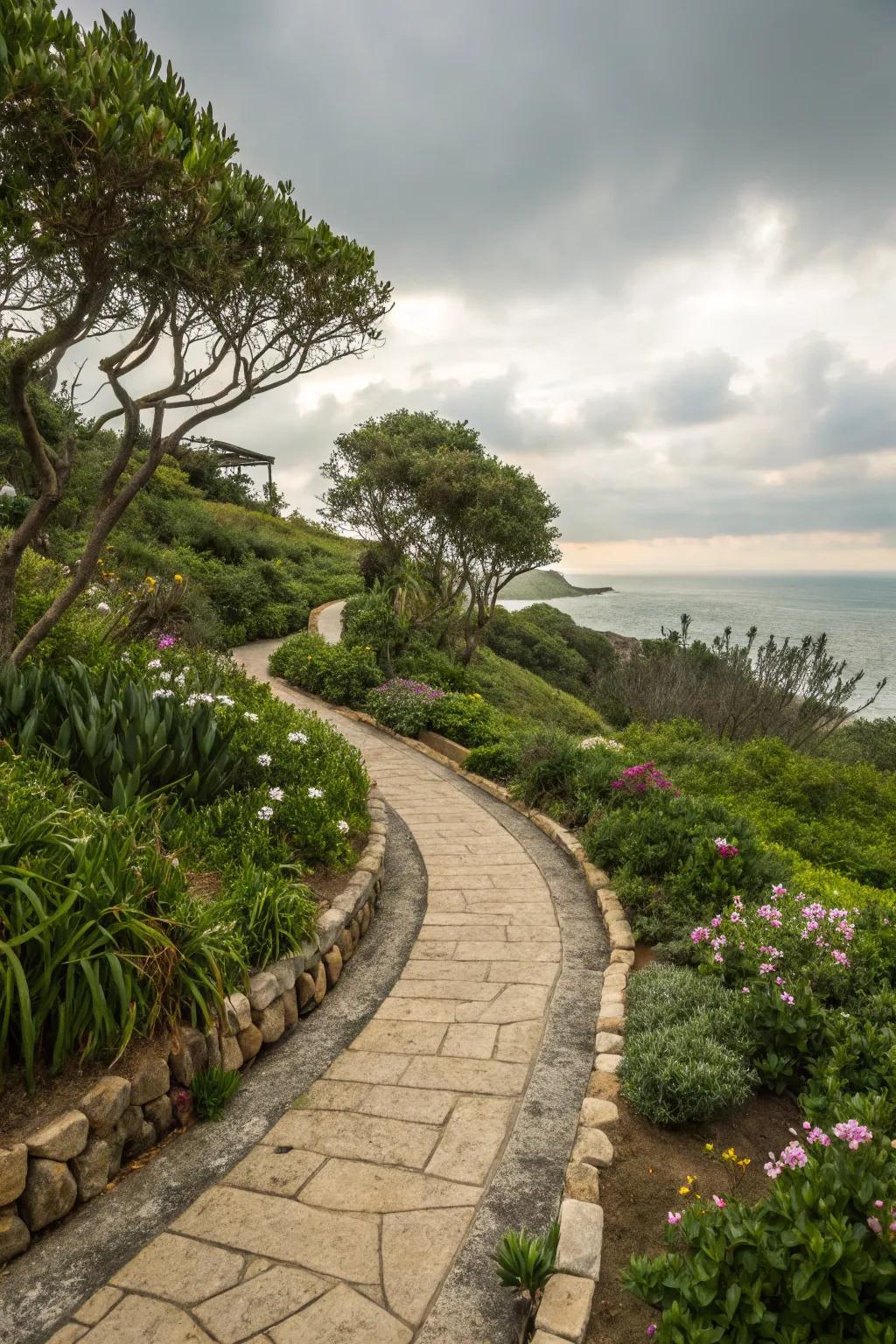
Curving paths made of stone or wood mimic the natural flow of the coast. I love how these paths gently guide visitors through the garden.
Items that may come in handy:
- Outdoor Stone Pavers: Enhance your garden with durable stone pavers, mimicking nature’s elegance while guiding visitors.
- Garden Pathway Lights: Illuminate your pathways with eco-friendly lights, adding charm and safety to your garden experience.
- Wooden Garden Edging: Define your pathways with rustic wooden edging, blending seamlessly into your natural landscape design.
3. Plant Native Vegetation
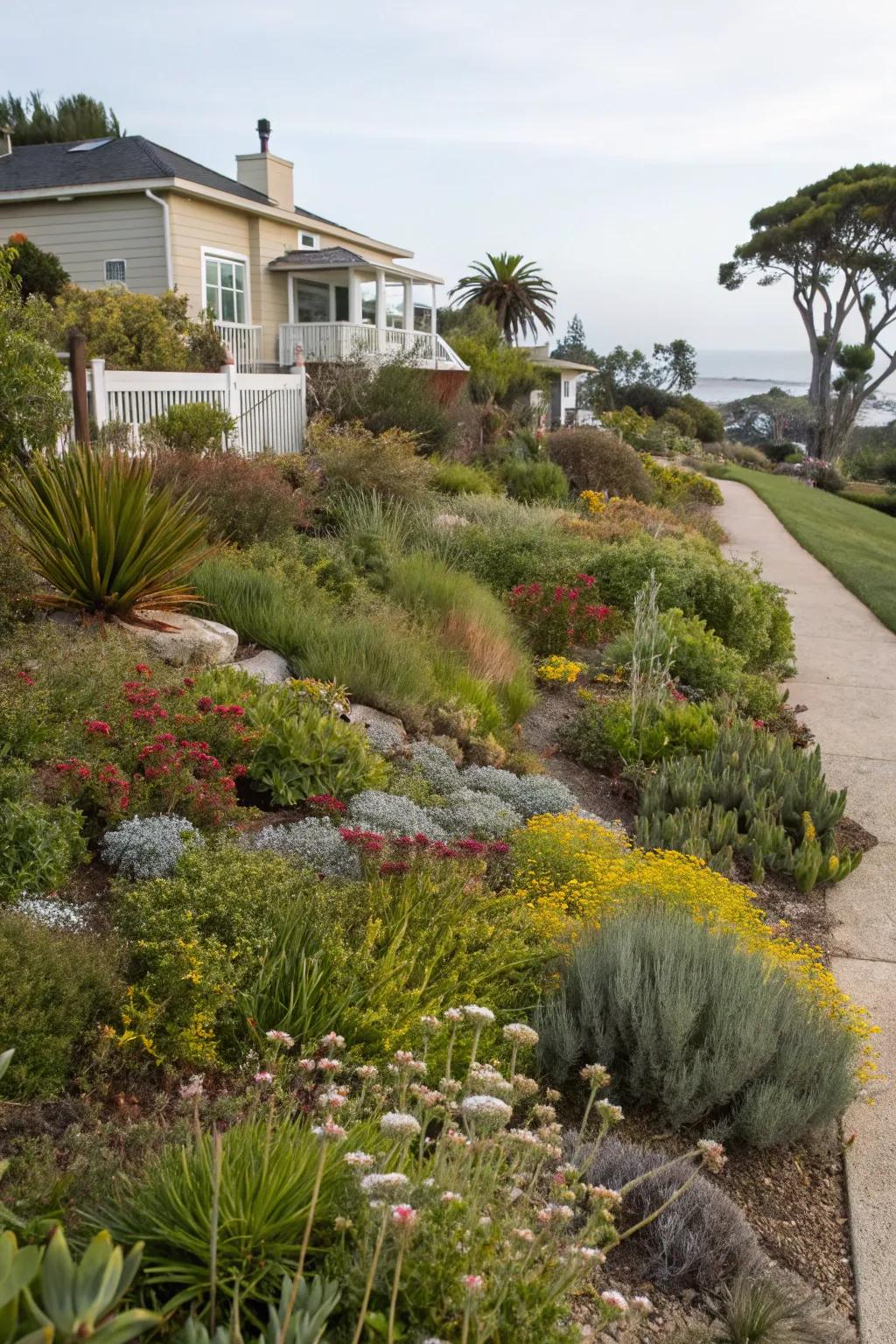
Using native plants ensures they thrive and support the local ecosystem. I find they also bring a natural beauty to the landscape.
Consider these options:
- Drought-Tolerant Native Plant Seeds: Transform your garden with these hardy seeds, perfect for low-maintenance and eco-friendly landscaping.
- Organic Soil Enhancer: Boost your native plants’ growth with this nourishing organic soil enhancer. Perfect for coastal areas.
- Eco-Friendly Mulch: Protect and nourish your native plants while enhancing aesthetics using this eco-friendly mulch.
4. Opt for Drought-Tolerant Plants

In my own garden, I love using grasses and succulents that thrive in tough coastal conditions. They add texture and require minimal care, making them perfect for busy lifestyles.
You might like:
- Mixed Drought-Tolerant Succulent Plants Set: Enhance your garden with easy-care succulents perfect for dry coastal conditions and busy lifestyles.
- Ornamental Grass Seeds Variety Pack: Grow resilient and beautiful ornamental grasses to add texture and life to your coastal garden.
- Coastal Garden Landscape Design Book: Get inspired with coastal landscaping ideas using drought-tolerant plants and sustainable garden practices.
5. Incorporate Seashell Borders
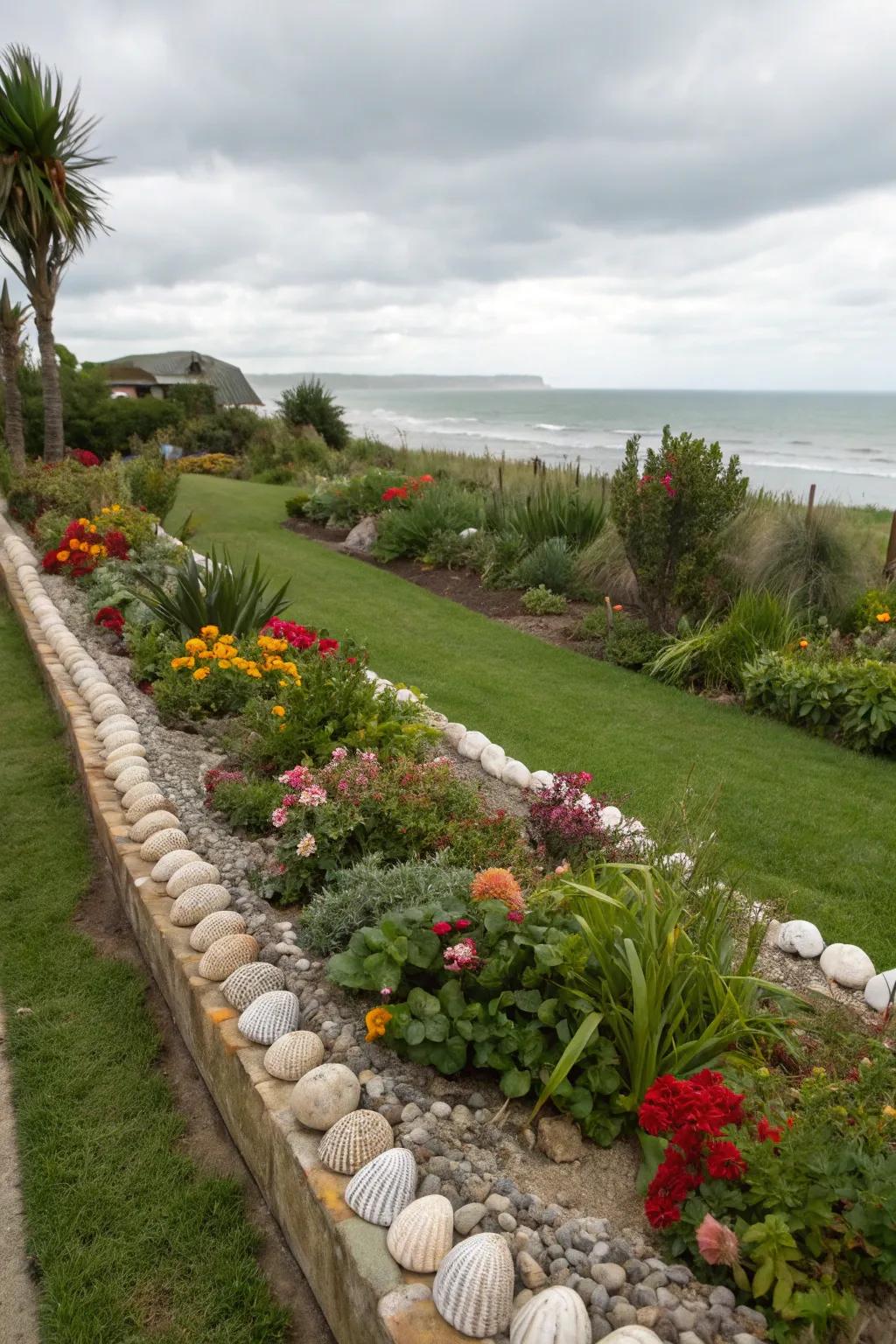
Seashells make charming borders around flower beds. My garden paths are lined with shells collected over the years, adding a personal touch.
Products that could assist:
- Decorative Seashell Collection: Enhance your garden with this charming decorative seashell collection, perfect for creating unique borders.
- Garden Landscaping Pebbles: Add texture and color with these assorted pebbles, ideal for complimenting seashell garden borders.
- Outdoor Weather-Resistant Glue: Secure your seashells with this weather-resistant adhesive, ensuring long-lasting garden borders.
6. Incorporate Smooth Rocks and Pebbles
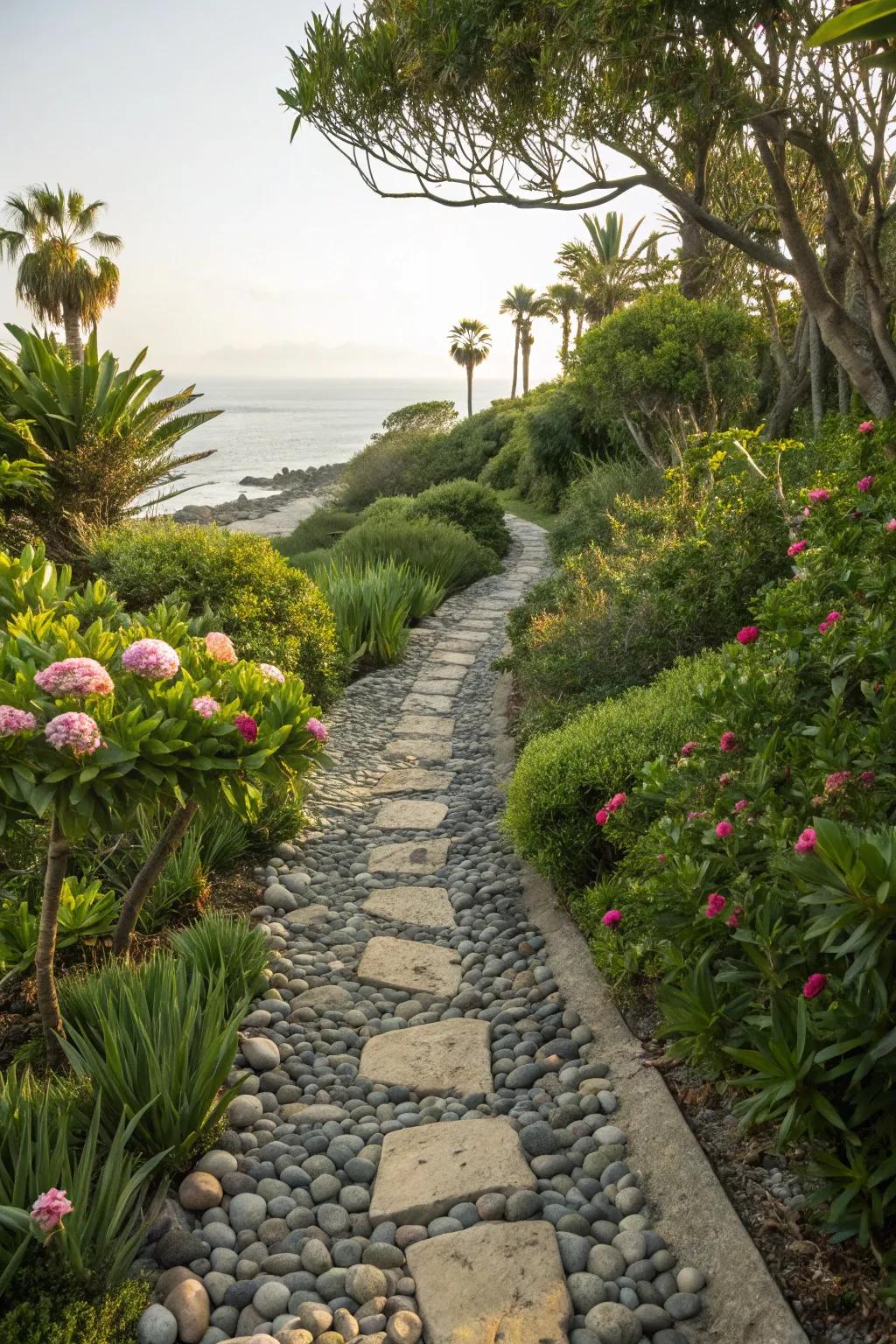
Using smooth stones and pebbles in your garden is a simple way to emulate the coastal vibe. I’ve lined my pathways with them, and it feels like a walk on the beach every time.
Try these:
- Decorative River Rocks for Landscaping: Transform your garden pathways with these natural river rocks for a serene coastal look.
- Polished Garden Pebbles: Add elegance to your walkways with polished garden pebbles, perfect for a beach-like atmosphere.
- Smooth White Pebbles: Create a stunning contrast in your garden with these smooth white pebbles for coastal charm.
7. Use a Coastal Color Palette
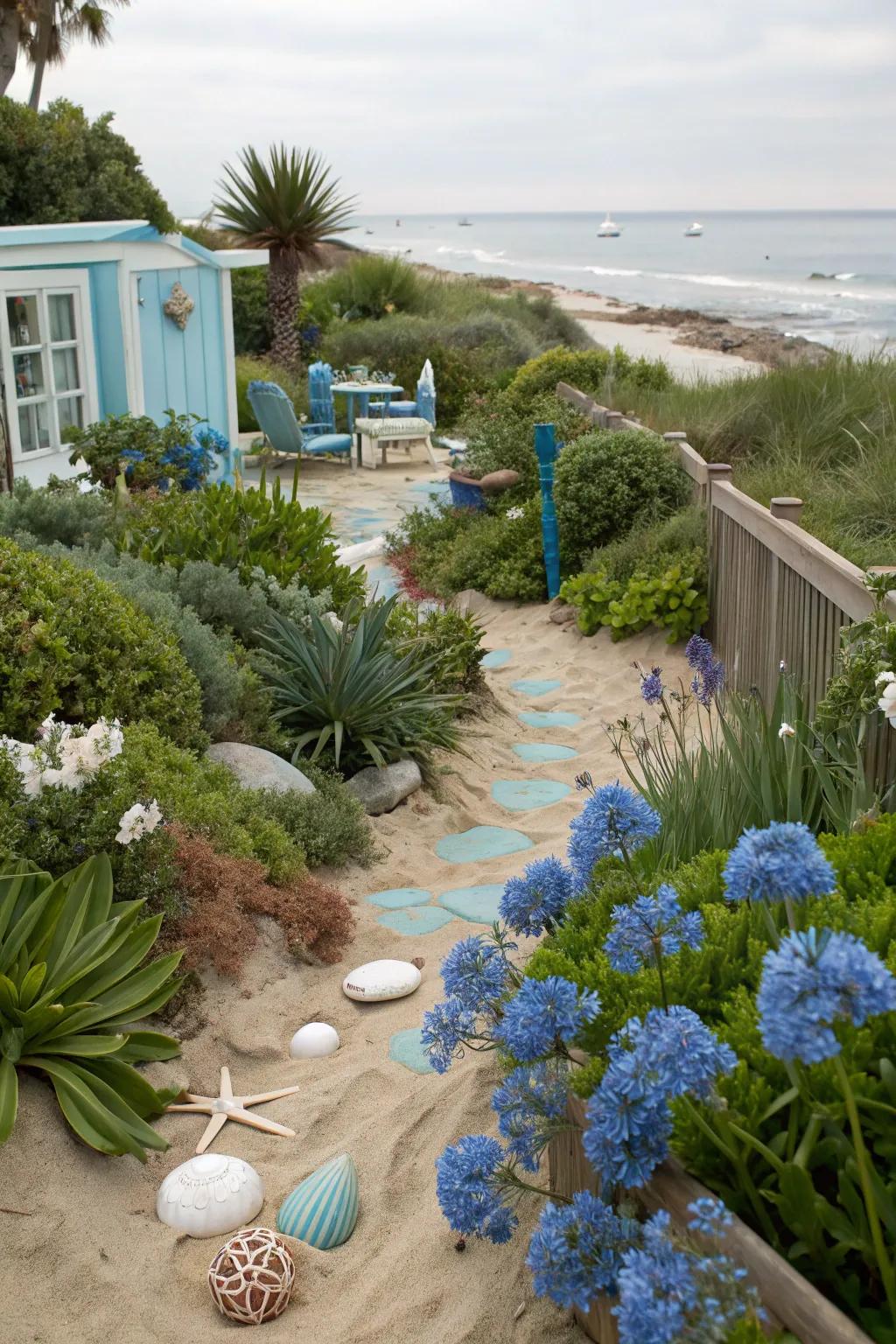
Blues, greens, and sandy browns reflect the sea and shore beautifully. These colors are sprinkled throughout my garden to create harmony.
Maybe worth checking out:
- Blue Ceramic Garden Planters: Add a coastal touch with blue ceramic planters, enhancing your garden’s seaside charm seamlessly.
- Green Outdoor Cushions: Embrace comfort and style with green outdoor cushions for a refreshing coastal vibe.
- Sandy Brown Decorative Rocks: Scatter sandy brown rocks for a natural beach-like feel in your garden pathways.
8. Design Outdoor Living Spaces
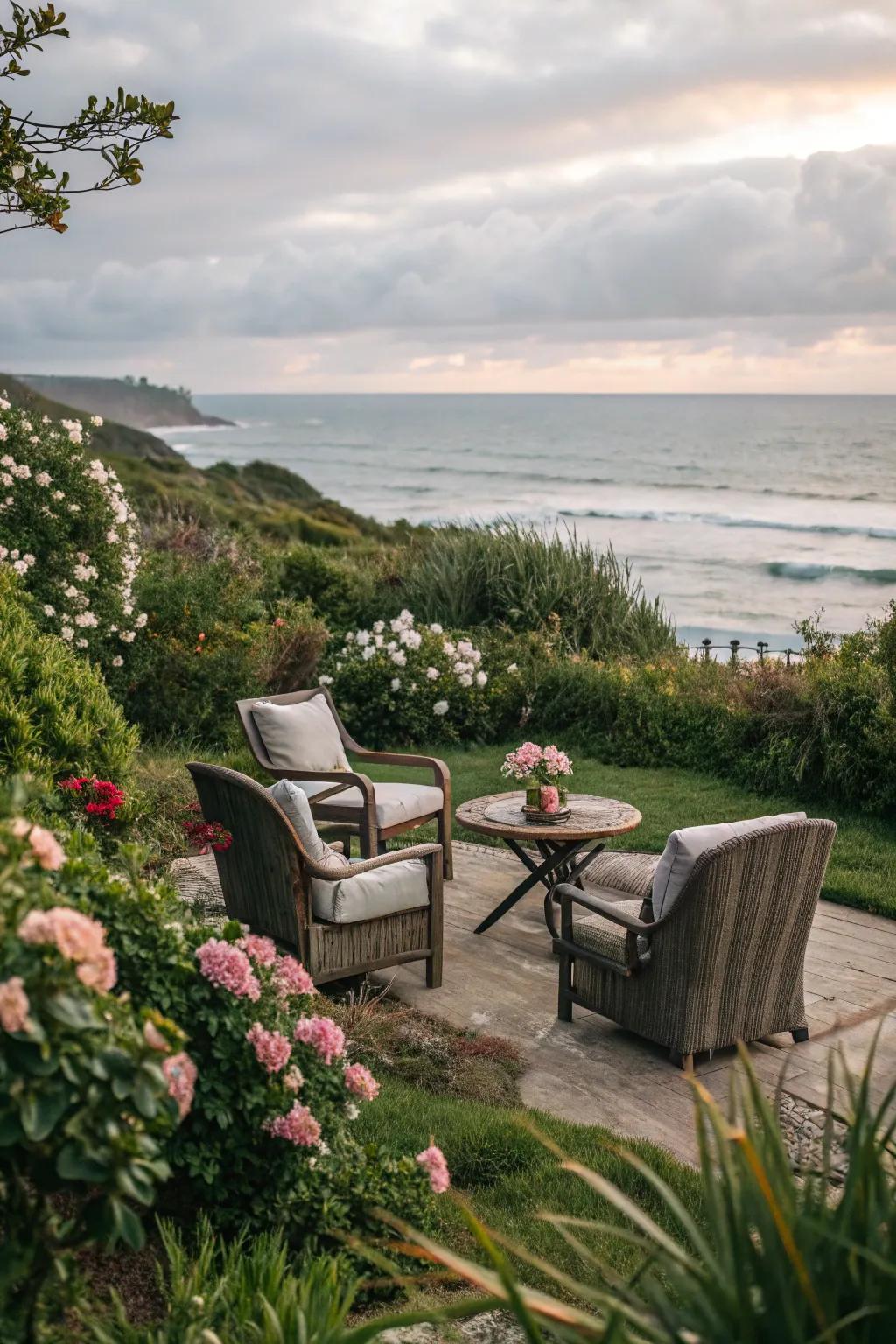
Creating a seating area with comfortable chairs and a table allows you to soak in the view. I always keep a cozy spot ready for morning coffee outside.
Check these products out:
- Outdoor Patio Chair Set: Relax in style with these comfortable chairs, perfect for enjoying your morning coffee outdoors.
- Weather-Resistant Patio Table: Enhance your outdoor space with a sturdy table for morning coffee or evening gatherings.
- Cushioned Patio Seat Pads: Add extra comfort to your seating area with durable and plush outdoor seat cushions.
9. Try Vertical Gardening
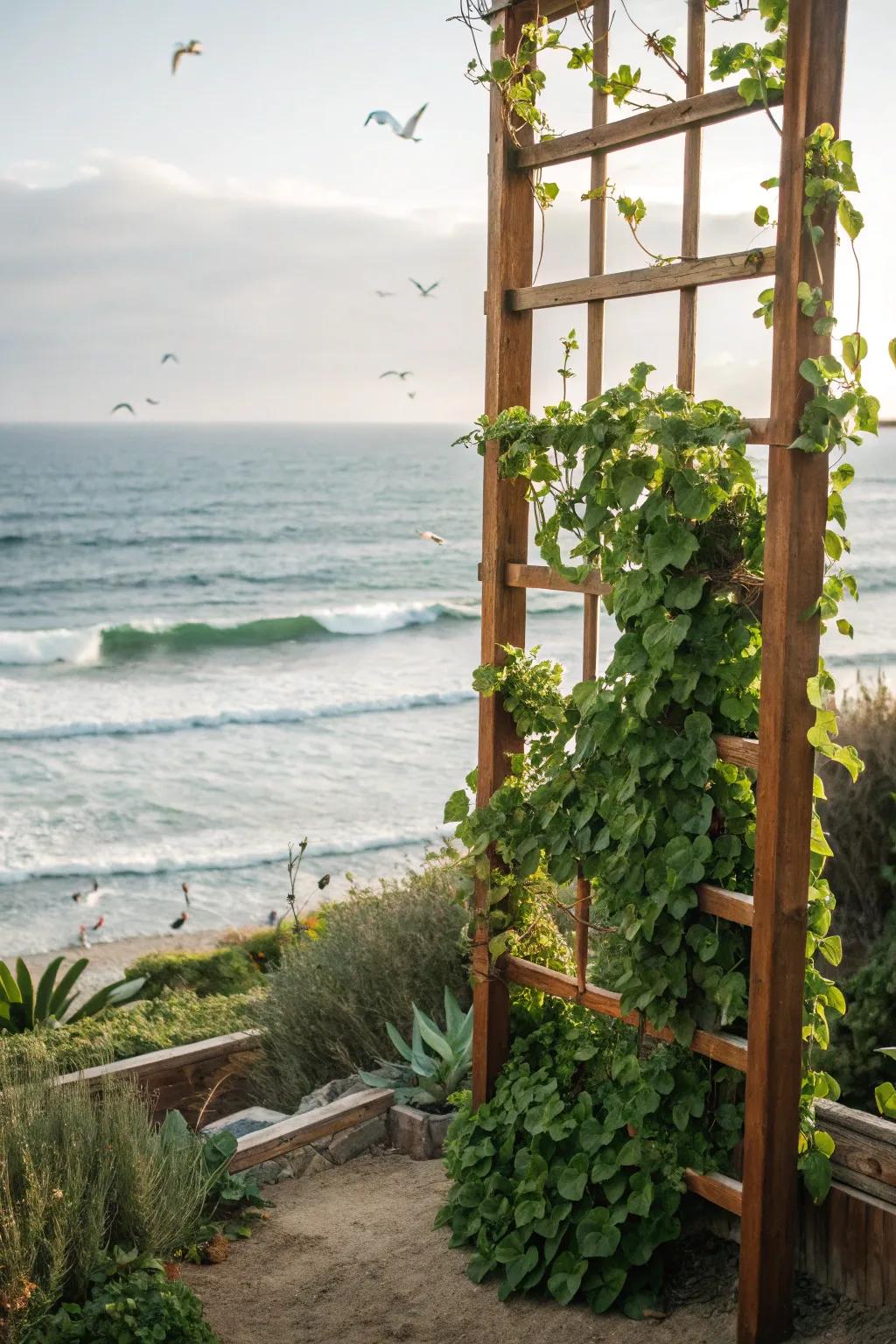
Maximize small spaces by growing plants upwards. I’ve used trellises to support climbing plants that add height and interest.
A few suggestions:
- Garden Trellis: Enhance your garden’s beauty by adding height with a sturdy, elegant trellis.
- Climbing Plant Support Clips: Ensure optimal growth for your climbing plants using easy-to-use support clips.
- Vertical Garden Wall Planters: Create a lush vertical garden with versatile and space-saving wall planters.
10. Try Night Lighting
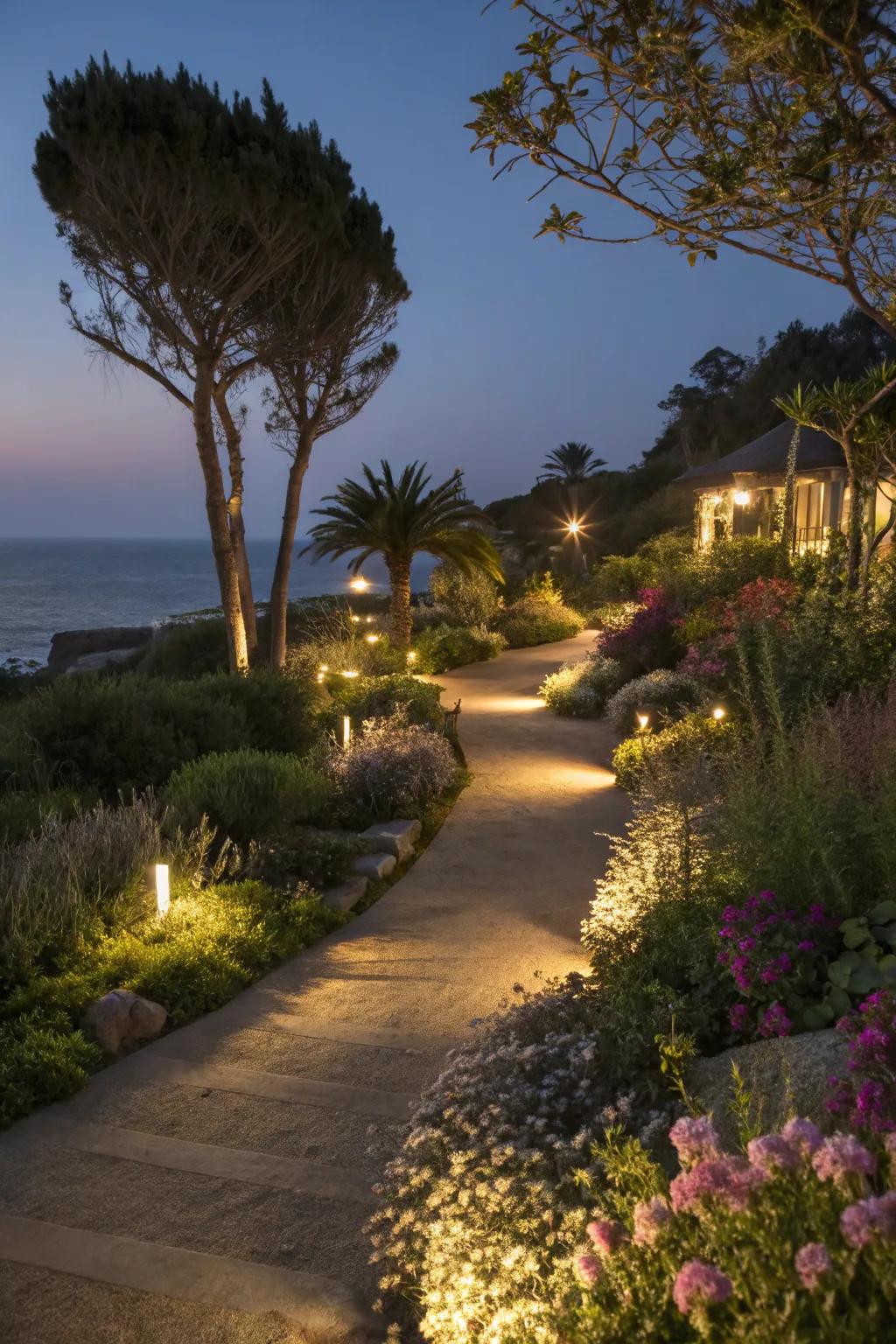
Add strategic lighting to enjoy your garden after dark. Solar lights are a favorite of mine, highlighting pathways and key features.
Possibly handy products:
- Solar Pathway Lights: Illuminate your garden paths effortlessly with eco-friendly solar pathway lights. Add charm and security.
- LED Garden Spotlights: Highlight key garden features with adjustable LED spotlights for a striking nighttime display.
- Weatherproof String Lights: Enhance your garden ambiance with charming, weatherproof string lights ideal for coastal areas.
11. Embrace Sandy Soil

Use plants that thrive in sandy soils to keep maintenance low. I’ve found succulents and certain grasses work wonders in these conditions.
Some handy options:
- Succulent Plant Collection: Enhance your coastal garden with easy-care succulents perfect for sandy soil conditions.
- Drought-Resistant Ornamental Grasses: Transform your landscape with hardy grasses that thrive in sunlit sandy environments.
- Coastal Wildflower Seeds: Add color and resilience to your garden with wildflowers suited for sandy coastal areas.
12. Enhance Ocean Views
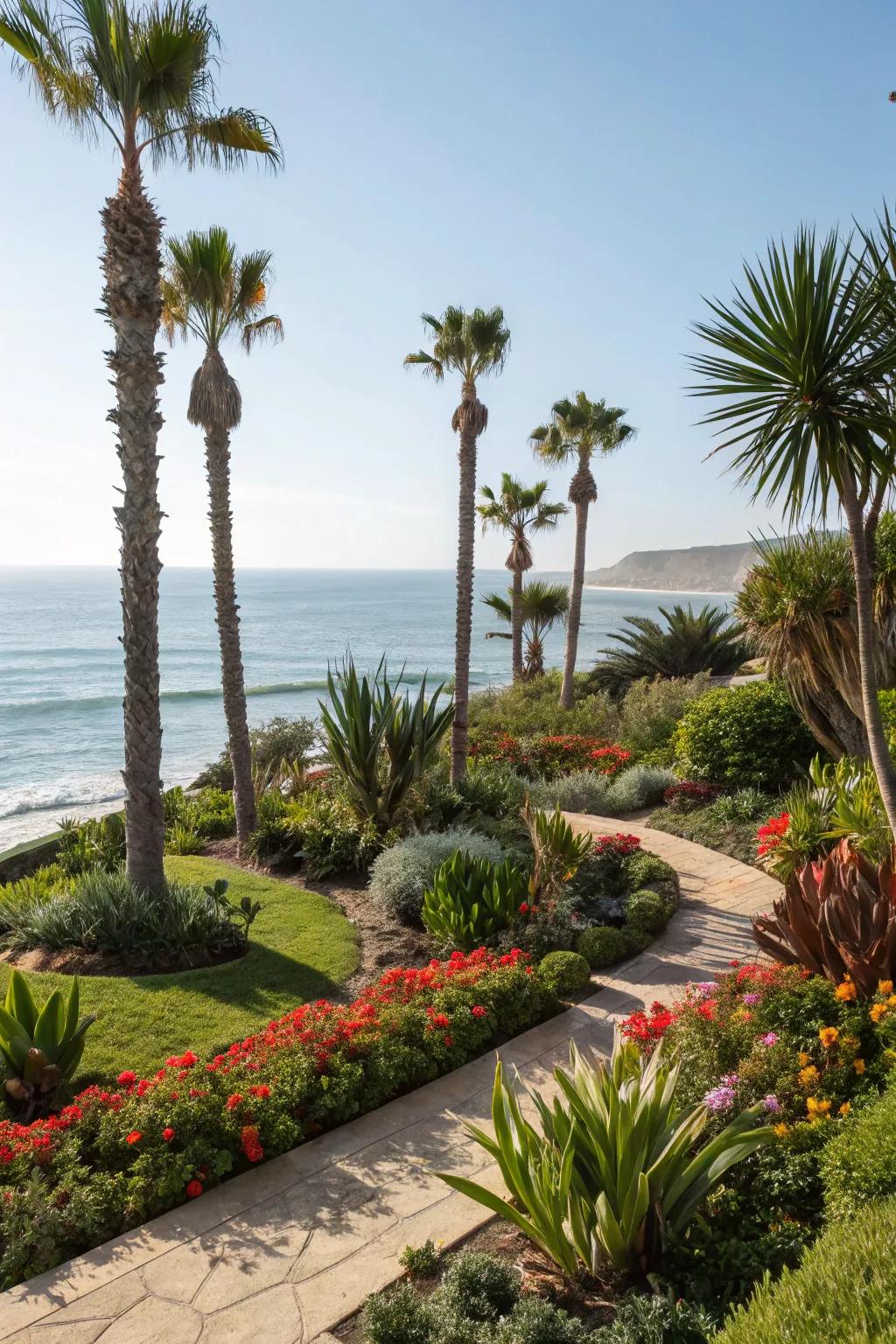
If you’re lucky to have a view, design your garden to make the most of it. I always clear paths and trim plants to frame the ocean beautifully.
A few choices to try:
- Garden Pruning Shears: Easily trim plants to keep ocean views clear and beautiful. Perfect your garden with precision.
- Outdoor Pathway Lights: Illuminate pathways elegantly to complement your ocean view and enhance evening ambiance beautifully.
- Garden Landscape Edging: Define garden borders, creating a polished look and maintaining clear sightlines to your ocean view.
13. Add Water Features
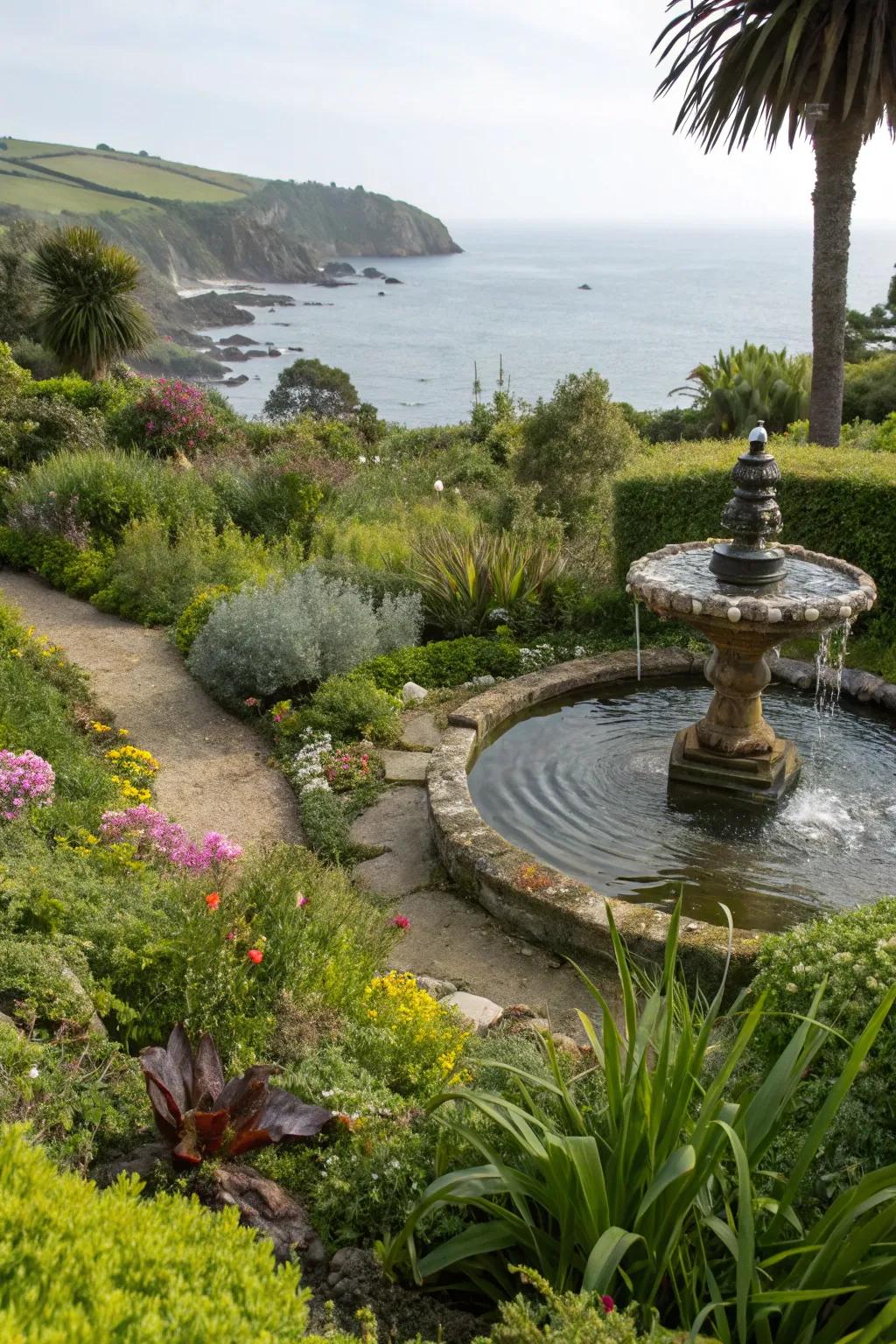
A small pond or fountain can replicate the soothing sounds of the ocean. I have a gentle trickling fountain that adds a calming background sound to my garden.
Might be a good match:
- Outdoor Garden Fountain: Transform your garden with a fountain’s calming sounds, attracting birds and soothing senses.
- Solar-Powered Water Pump: Enhance your pond with an eco-friendly water pump, adding movement and vitality effortlessly.
- Small Garden Pond Kit: Create a serene pond oasis easily with a complete garden pond kit, perfect for any yard.
14. Incorporate Wind Screens

Use shrubs or fences to protect your garden from strong coastal winds. I’ve planted hardy shrubs that act as natural windbreaks.
These products might be useful:
- Hardy Shrubs for Windbreaks: Enhance garden resilience by planting hardy shrubs to naturally shield against coastal winds.
- Outdoor Privacy Fence Panels: Install these fence panels to protect your garden and add a stylish boundary.
- Garden Windbreak Fabric: Use windbreak fabric to minimize wind impact, ensuring plants thrive in coastal gardens.
15. Use Recycled Materials

Incorporate recycled materials for a sustainable touch. I’ve repurposed old wood to create charming planters and borders.
May just do the trick:
- Reclaimed Wood Planters: Add rustic charm to your garden with these eco-friendly reclaimed wood planters.
- Recycled Rubber Garden Edging: Create durable borders with recycled rubber edging, enhancing your garden’s sustainability.
- Wooden Crate Planters: Organize and decorate your garden with versatile wooden crate planters for a vintage touch.
16. Include Palm Trees and Tropical Plants

Palm trees give an exotic touch and are surprisingly easy to care for. They remind me of tropical vacations and make my garden feel like an escape.
Some ideas to consider:
- Artificial Outdoor Palm Trees: Enhance your garden’s exotic appeal with low-maintenance artificial palm trees that last all year.
- Tropical Plant Fertilizer: Boost your tropical plants’ growth with specially formulated fertilizer for vibrant and lush foliage.
- Solar Powered Garden Lights: Illuminate your tropical landscaping with eco-friendly solar lights for a warm, inviting glow.
17. Use Driftwood Accents
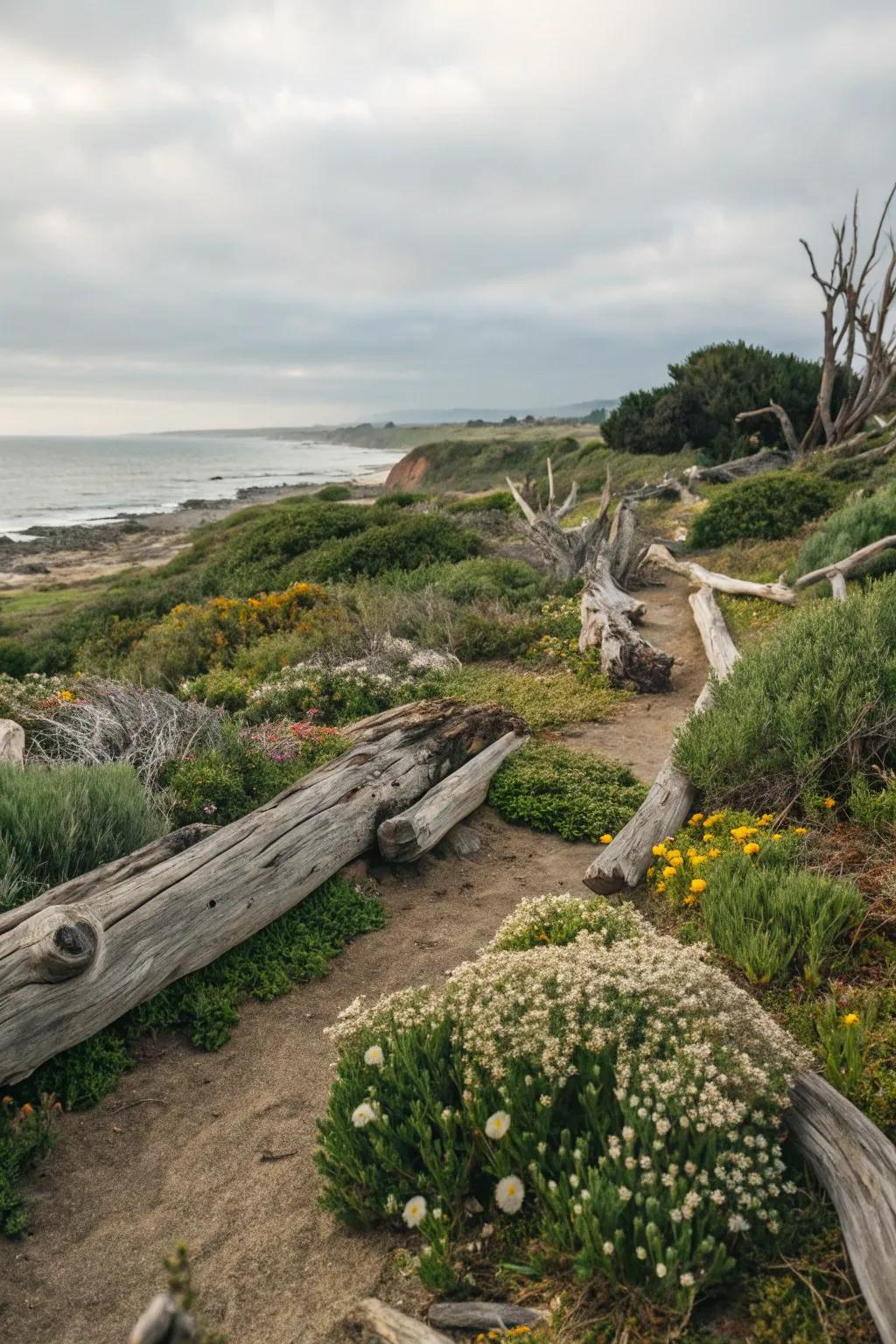
Driftwood can act as natural sculpture in the garden. I’ve placed pieces strategically to break up plantings and add a rustic element.
Explore these options:
- Natural Driftwood Sculpture: Enhance your garden’s charm with a driftwood sculpture adding texture and artistic flair.
- Driftwood Garden Edging: Define paths and borders beautifully with rustic driftwood edging for a coastal garden look.
- Driftwood Planter: Introduce a unique focal point with a driftwood planter to showcase your favorite plants.
